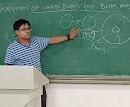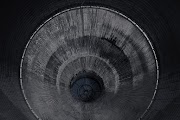Astronomy and Astrophysics
Detail analysis of Population 1 and Population 2 type stars!!!
In previous article about ‘the types of supernovae’, I wrote
about the supernovae happening in population 1 and population 2 type stars.
Population 1 stars include the sun and tend to be luminous,
hot and young, concentrated in the disks of spiral galaxies. They are
particularly found in the spiral arms. With the model of heavy element
formation in supernovae,
this suggests that the gas from which they formed had been seeded with the
heavy elements formed from previous giant stars. About 2% of the total belong
to Population 1.
 |
| Spiral Galaxy |
Population 2 stars
tend to be found in globular clusters and the nucleus of a galaxy. They tend to
be older, less luminous and cooler than Population I stars. They have fewer
heavy elements, either by being older or being in regions where no
heavy-element producing predecessors would be found. Astronomers often describe
this condition by saying that they are "metal poor", and the "metallicity"
is used as an indication of age. Type 2 stars generally occurs in Population 2
type stars which are typically found in elliptical galaxies.
 |
| Elliptical Galaxy |
My other articles on Chandrashekhar limit, Electron and Neutron degeneracy and a detail analysis of Type 1a supernovae will be uploaded very soon. Once they are uploaded the link will be available here and also in my social handles.
To know more about bosons and fermions click here......
To know basics of quantum world, astronomy and space exploration you can check out my book "Through the wormhole" on amazon kindle.
You can directly talk with me on Instagram
To meet more physics Enthusiasts please join our Facebook Page
Also for latest updates of my posts join me on TwitterTo meet more physics Enthusiasts please join our Facebook Page
Thanks for reading.....
See you next time!!!
-Ratnadeep Das Choudhury
Founder and Writer of The Dynamic Frequency













0 Comments